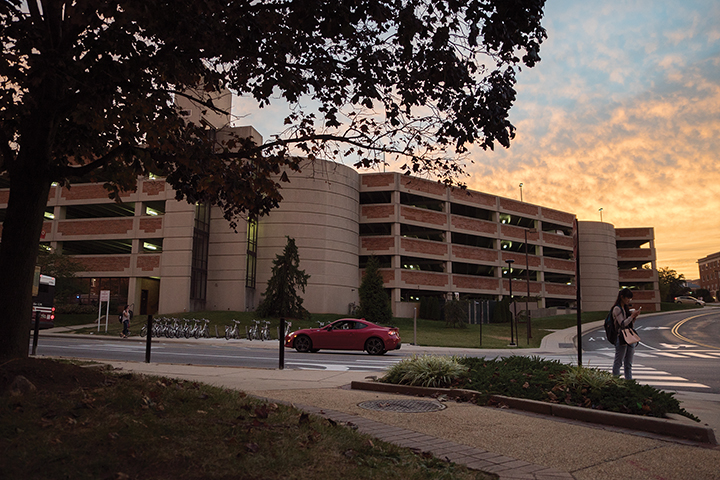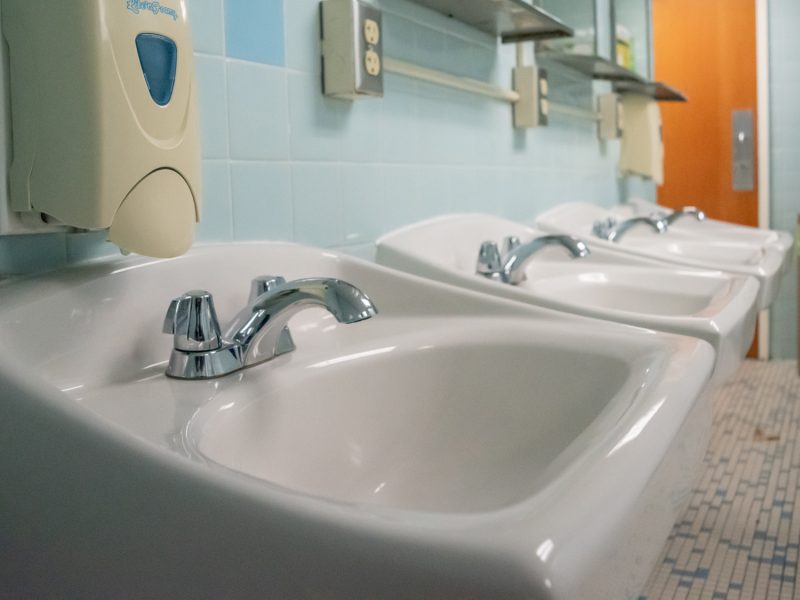By December 2017, University of Maryland students walking near the Regents Drive, Terrapin Trail and Mowatt parking garages will be able to see solar canopies peeking out from the garages’ rooftops.
Solar canopies consist of solar panels that are suspended in the air with beams, resembling a canopy structure. The project to install these canopies was supposed to be implemented by the end of 2016, but it has been delayed for another year due to architectural concerns, said Mary-Ann Ibeziako, director of Facilities Management’s engineering and energy department.
Ibeziako said Facilities Management now plans to start construction after graduation takes place in spring 2017, with most of the work being completed over the summer. The canopies will be functional by December 2017, she added.
“The campus architecture review board wanted the architecture to be in line with our current architecture on campus,” Ibeziako said. “It was actually a good thing for the delay because they wanted to create a design so that people could actually see it from the ground, and we are celebrating something that we are doing.”
Currently, Ibeziako said, this university has some solar panels installed on the rooftops of the Severn Building and Cole Field House. However, the solar canopies that will be installed on top of the three parking garages will be the main part of the project.
Ibeziako noted the installation of the three solar canopies will not cost the university anything up front because of an outstanding agreement with a solar energy provider. The agreement states the company will install canopies for free, and in return, the university promised to buy solar power from it monthly for the next 20 years.
Even after the canopies are installed, however, the university won’t be operating exclusively on solar energy, Ibeziako said.
“We are going to have a mix [of solar and electrical energy],” she said. “We always have a mix because you don’t want to have only a single source; you want resilience on campus. The solar is just a portion of the campus energy.”
Douglas Weitzel, a sophomore economics and government and politics major, said he doesn’t think this project is worth the money the university will be paying for the next 20 years.
“I’m just concerned about the cost and how long it will take for the initial investment to be paid off and if that money is better spent elsewhere, doing other green activities if that’s the proposed goal,” he said. “Maybe in ten years you could just install better solar panels that would have a quicker return on investment.”
Anna McLaughlin, this university’s Department of Transportation Services assistant director, expressed a positive view about the upcoming collaboration between her department and Facilities Management.
“DOTS is very supportive,” she said. “We’re excited about having solar panels on top of our garages. I think it makes a good statement about what the university is doing for sustainability and how we’re embracing solar energy and new energy sources that are sustainable and good for the environment.”
Because the installation of the canopies will take place on the roofs of garages where people park, DOTS plans to notify the people who park in that area well in advance, McLaughlin said.
“It will be a disruption for a short amount of time while there’s installation, but then it’s going to be not only providing solar power to the campus, but it will be providing a little bit of a canopy on the roofs as well for the vehicles that are parking there,” she said.
The disruption is minimized by the fact that most of the installation will be done over the summer. Ibeziako said she believes the canopies will be worth any short-term inconvenience.
“We hope that these parking garage solar canopies demonstrate to students, faculty staff and visitors that the University is committed to acting on climate and green power,” Ibeziako wrote in an email. “The parking garages are distributed across campus, so students, faculty, staff, visitors and the local community will be able to see these solar canopies many locations across the campus.”



